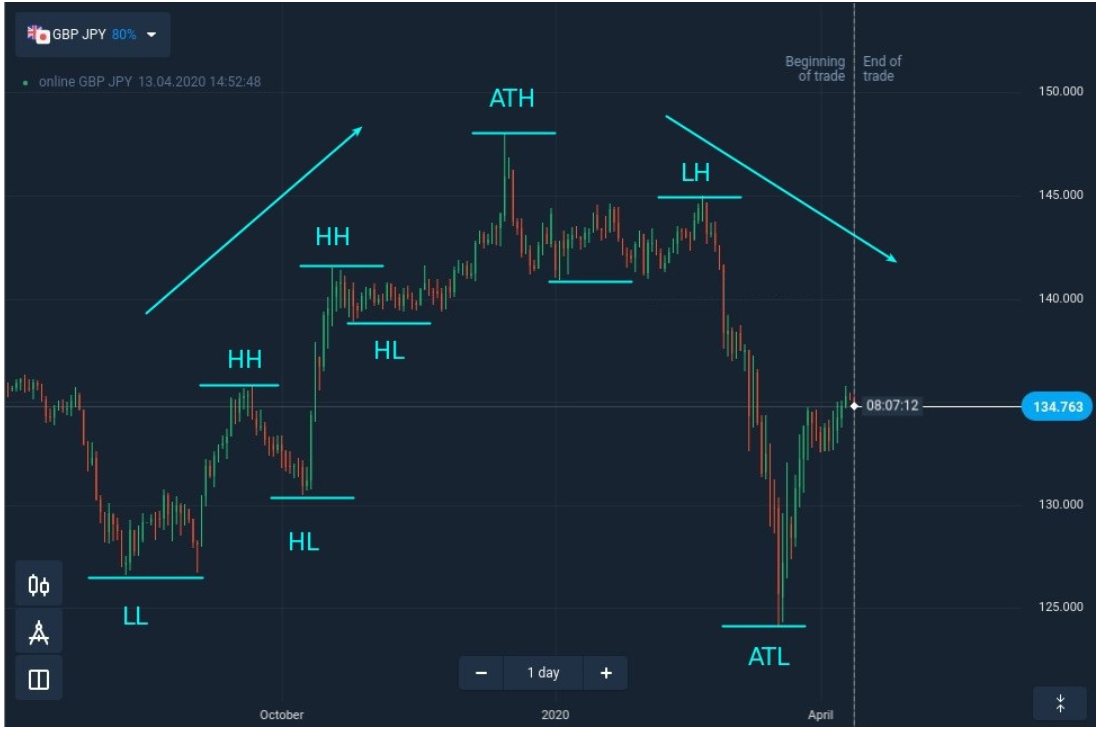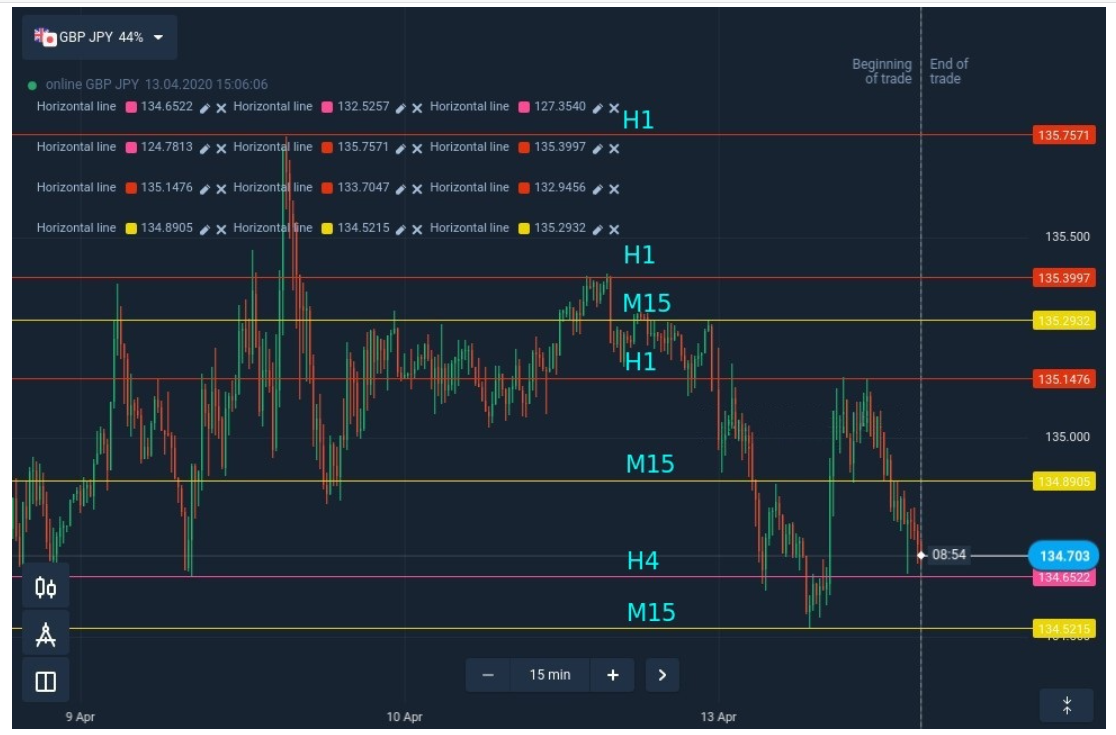The support and resistance levels are very useful to traders. Naturally, after they are depicted on the chart. However, sketching them is not always as simple a chore as one might imagine. Correct marking is necessary for the support and resistance to be trustworthy.
You will discover a few useful techniques in this post for locating the levels of support and resistance on the Quotex platform.
The approaches I’ll outline are as follows:
local highs and lows
various time periods
Averages of movement
Fibonacci scales
Trendlines
Local lows and highs
You must first create your chart in order to determine the support and resistance levels through local lows and highs. Look at the graphic after selecting the asset and timeframe. Identify the highest point and the lowest point. The All-Time High (ATH) will be the first one. The second extreme, or the All Time Low, will be Atlanta.
Marking the chart’s peaks and troughs is the following step. They are referred to as higher lows (HL) and higher highs in an upswing (HH). There will be lower highs (LH) and lower lows (LL) during a decline (LL).
Each horizontal line that denotes a low or a high also functions as a support or a barrier.
Let’s examine the graph. HLs stand in for the support levels and HHs for the resistance levels during an uptrend. LHs are the resistance and LLs are the support during a downturn.

Multiple timeframes
You must apply the support and resistance levels from the longer durations while using this technique. Check the support/resistance on the 1-hour timeframe when trading on a 15-minute timeframe. Levels are marked. Put the levels from the 4-hour timeframe onto your 15-minute chart after that.
When the support and resistance from the higher and lower timeframes coincide, the levels are significantly stronger.

Moving averages
The next method for determining support and resistance levels is to use moving averages. The Simple Moving Average or the Exponential Moving Average are both options. The periods can be changed to see what works best for this particular purpose. You can experiment with the 20-day or 55-day moving averages to see how they perform.
Moving averages only serve as dynamic support/resistance, which means that the level changes in tandem with the movements of the moving average.
You’ll notice that the moving average establishes a dynamic resistance level during the slump. After it is reached, the price starts to decline.
The moving average will function as a dynamic support level during the rise. Once more, the prices approach, perhaps even touch, or perhaps cross, and then rise much higher.

Fibonacci levels
Recognizing the support and resistance levels is also a good idea using well-known Fibonacci levels. 0.382 and 0.618 are the most widely utilized in the currency market.
A significant retracement of the initial motion frequently follows a significant upward or downward price movement. Quite frequently, the retracement extends all the way to the Fibonacci levels.
Let’s examine the following example. After a lengthy decline, the price has returned up to 0.618, which might be considered a resistance at this point. The price then begins to decline once more.

Trendlines
You need to locate at least two peaks or two bottoms when you want to build a trendline. But, more is always better. The trendline will be more important and more effectively validated if there are several tops or bottoms.
A trendline will serve as resistance during a downturn and as support during an uptrend. Prices don’t seem to outweigh these lines.
As they repeatedly test those levels in a sideways trend, the trendline creates very strong support and resistance.

Summary
In trading, the levels of support and resistance are crucial. They can be recognized in a number of ways. Today I discussed how to achieve that goal using moving averages, trendlines, Fibonacci levels, different timeframes, local lows and highs, and local lows and highs.
To verify the outcome of the first procedure, you can use a different one. When levels hold steady while being located through several strategies, they are thought to be stronger.
Start practicing identifying the support and resistance levels on the price chart by logging into your Quotex account right away. Any thoughts you have on this matter should be shared with us. Below is a space for comments.
FAQS:
Q: What are support and resistance levels in trading?
A: Support and resistance levels are price levels on a chart where the price of an asset tends to find support or resistance.
Q: How can I find reliable support and resistance levels on Quotex?
A: Traders can use technical analysis tools, such as charts and indicators, to identify potential support and resistance levels. They can also look for areas on the chart where the price of an asset has historically found support or resistance.
Q: What are some tips for finding reliable support and resistance levels on Quotex?
A: Traders should use multiple technical analysis tools and look for areas on the chart where the price of an asset has historically found support or resistance. They should also consider other factors, such as market conditions and news events, that could impact the price of the asset.
Q: What are the advantages of finding reliable support and resistance levels on Quotex?
A: Finding reliable support and resistance levels can provide traders with valuable information about potential price movements and help them make more informed trading decisions.
Q: Are there any risks associated with finding reliable support and resistance levels on Quotex?
A: Like all trading tools and strategies, there are risks associated with finding support and resistance levels on Quotex. Traders should be aware of potential market volatility, market conditions, and other factors that could impact their trades. It’s also important to use risk management strategies, such as stop-loss orders, to minimize potential losses.








